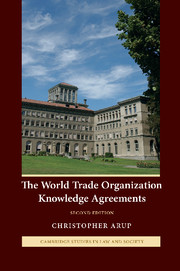Book contents
4 - The General Agreement on Trade in Services
Published online by Cambridge University Press: 23 February 2010
Summary
The immediate aim of this chapter is to lay out informatively the provisions of the GATS agreement. The GATS provides both a set of norms for trade liberalisation and a structure for successive rounds of negotiations over commitments to such norms. The initial negotiations took place within the Uruguay Round. Another round started up in the year 2000 and still proceeds.
The chapter underlines the significance for globalisation of a multilateral services agreement. Services have the potential to carry globalising messages far into the reaches of the locality, challenging their domestic arrangements for supply and undermining their competence to regulate for social purposes. The GATS mediates relationships between foreign suppliers, who are often carrying more favourable legalities from their home bases, and local legalities of supply. But the GATS also takes a position on content. It challenges industry-specific regulation and promotes market-oriented regulatory ‘modalities’ such as contract law and possibly competition law.
The status and format of the GATS are the chapter's first concerns. The chapter recognises that a key mediation technique is the way the negotiations over commitments have been structured. This chapter investigates the listings approach of the GATS: the way national governments were permitted to control the exposure of their regulatory measures sector by sector. The course of the negotiations is also characterised. The chapter shows how this process gave expression to a range of reservations about liberalisation and it notes the overall outcome of negotiations within the Uruguay Round.
- Type
- Chapter
- Information
- The World Trade Organization Knowledge Agreements , pp. 165 - 231Publisher: Cambridge University PressPrint publication year: 2008

